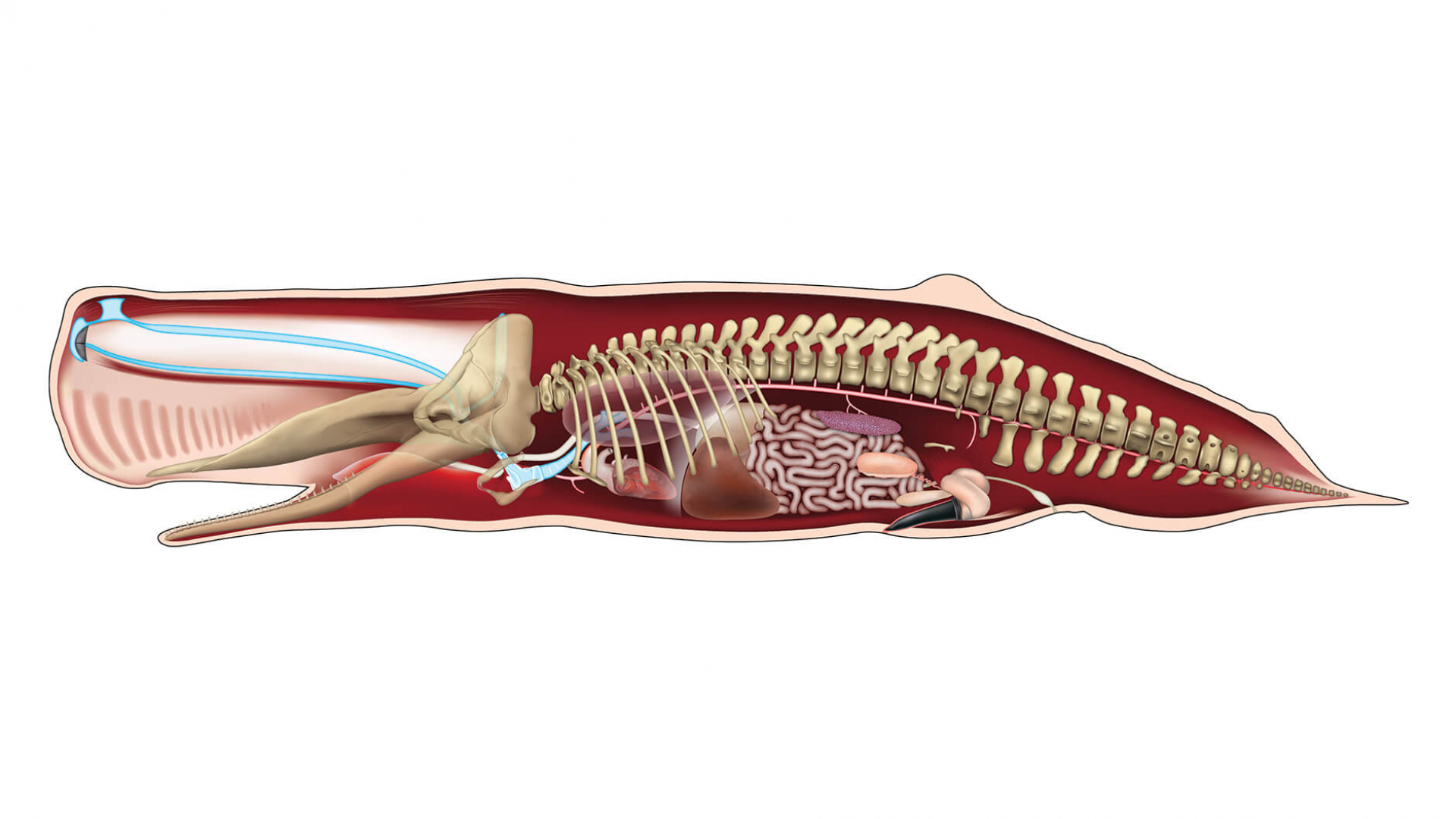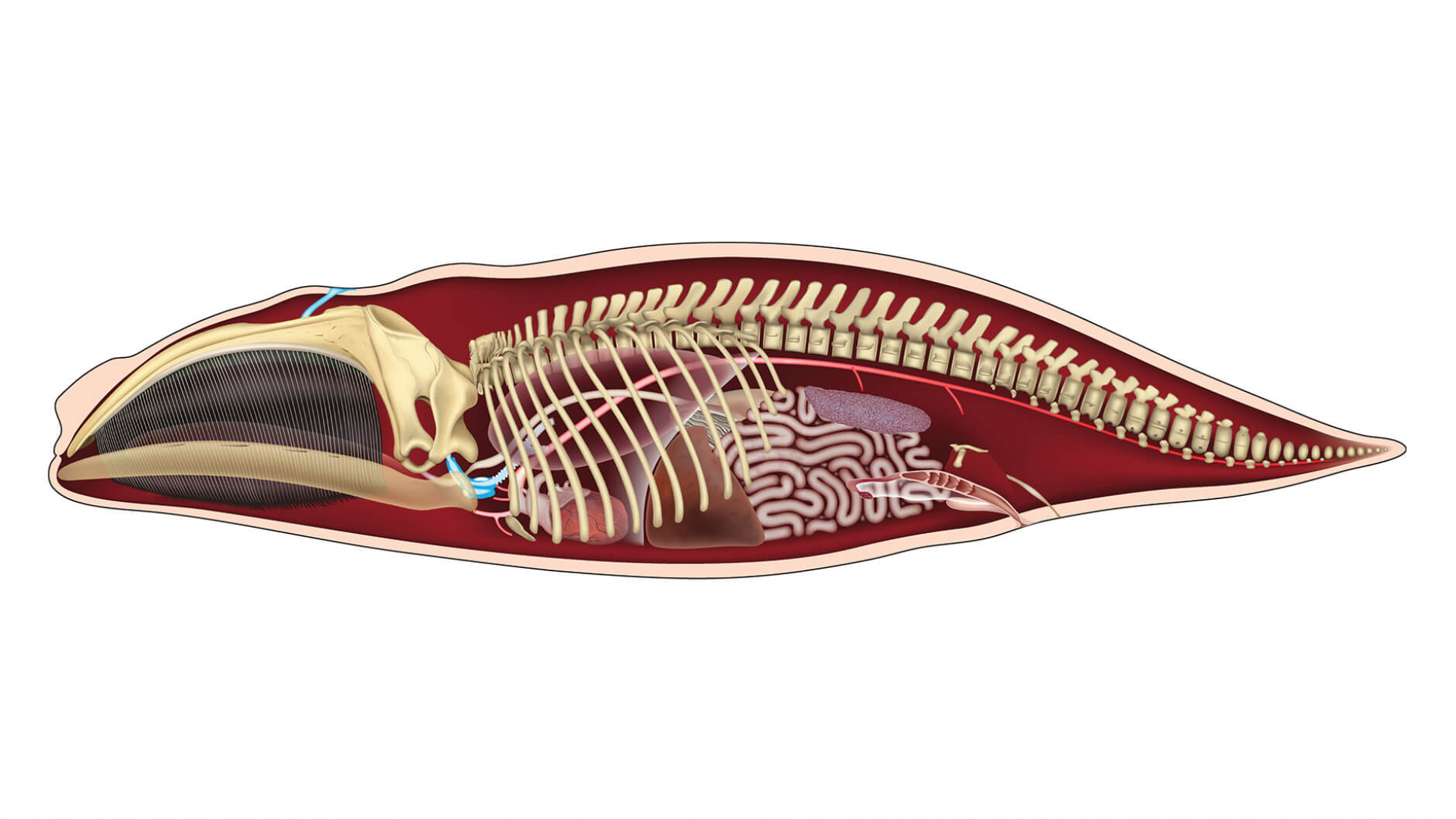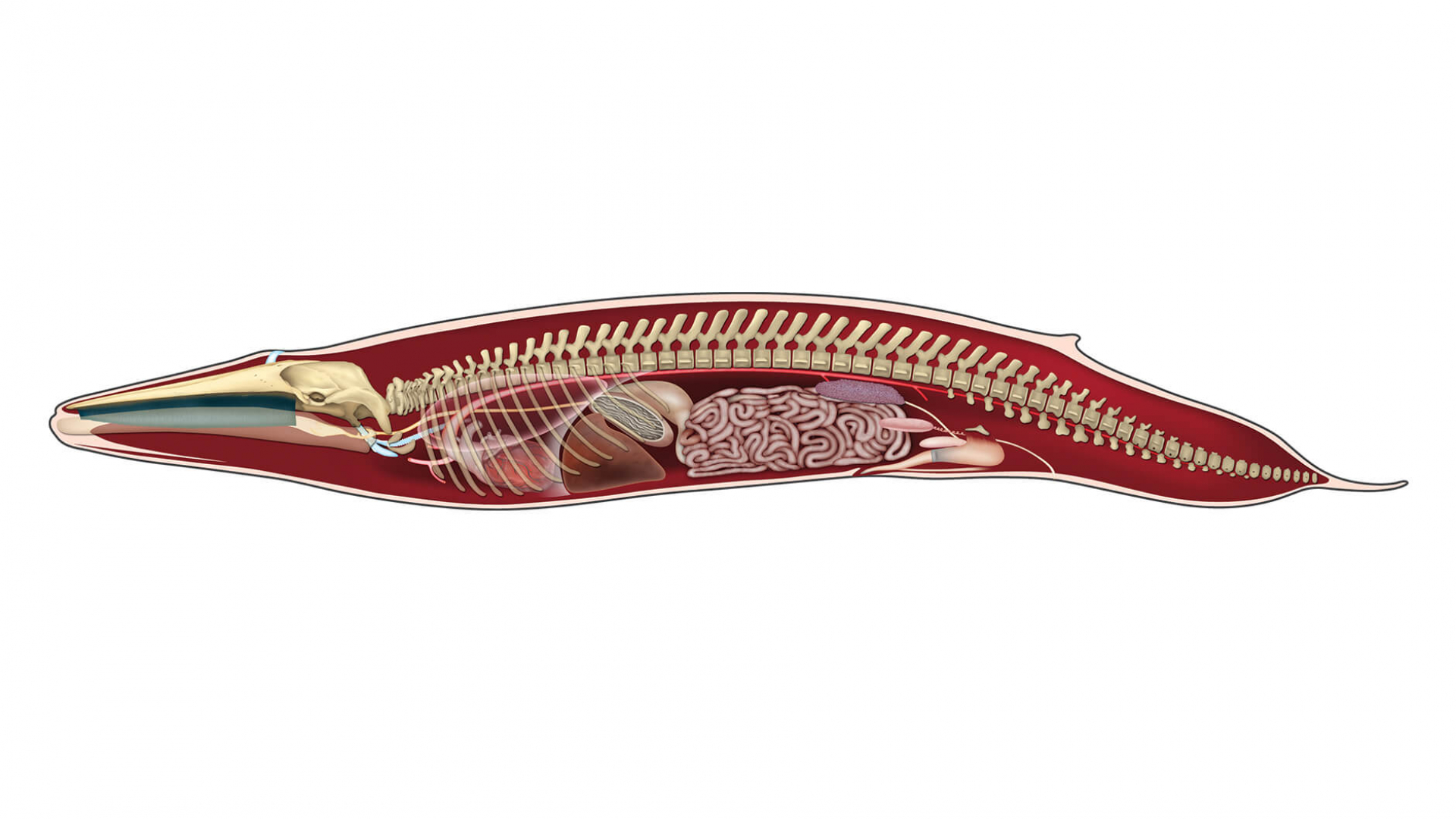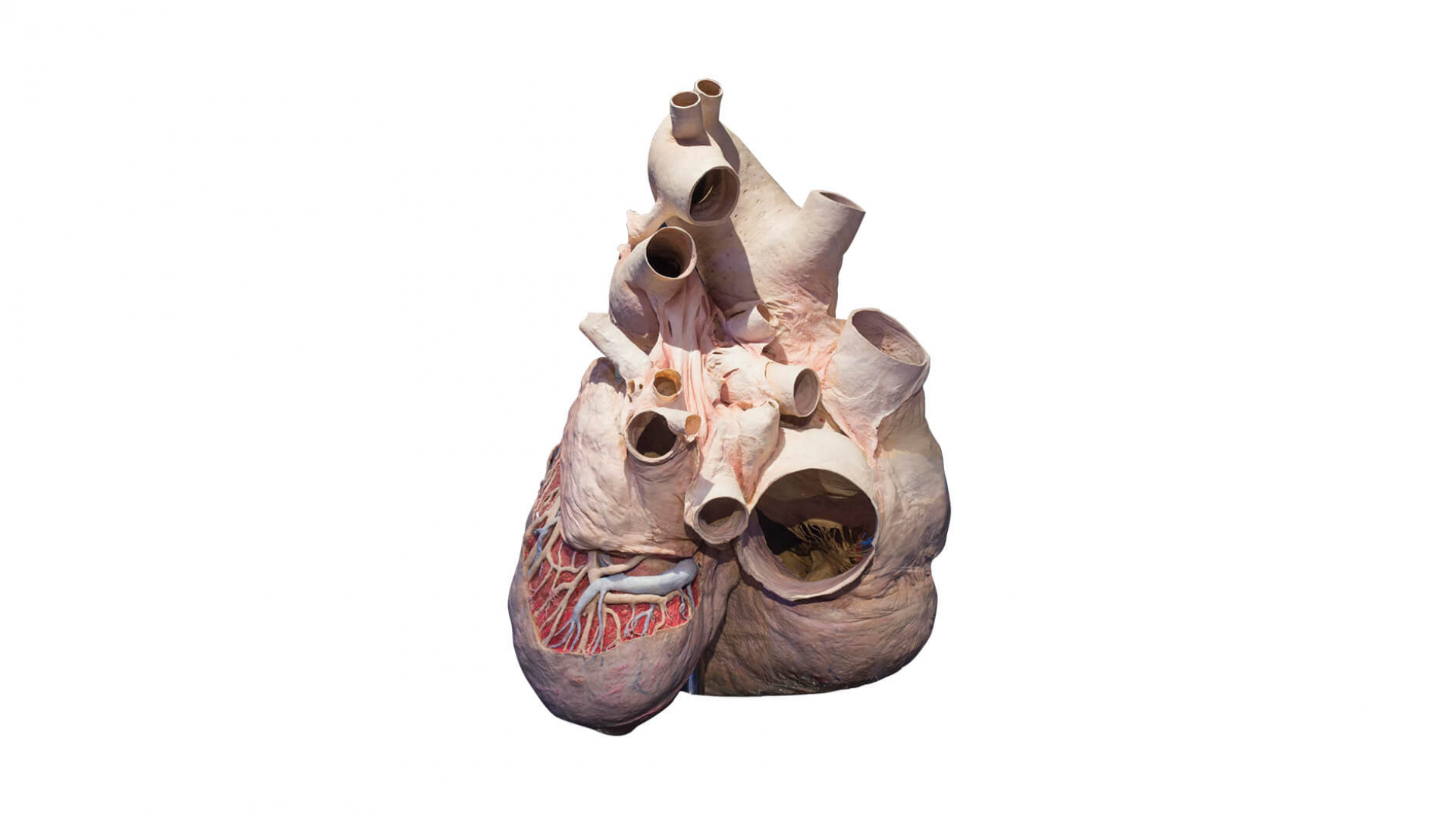From bulbous foreheads to giant compressible ribcages, we look at how whale skeletons are uniquely adapted for their size
Sperm Whale
The forehead of sperm whales is big and bulbous. It contains soft tissues that decompose when the whale dies, so they’re not preserved with the skull.
North Atlantic Right Whale
Look at how curved the upper jaw is. Right whales have baleen plates in their mouths for feeding. These keratin sheets are extra long to filter millions of tiny copepods from the water.
Blue Whale
When whales dive, their giant ribcage compresses. This prevents the ribs from breaking under the pressure and damaging the heart and other organs within.
A whale heart works the same as a human heart, but is different in shape, size, rate, and volume. The blue whale heart is the largest in the animal kingdom.
Explore More
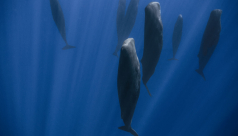
Opens Summer 2021
Garfield Weston Exhibition Hall, Level B2
Lead Exhibition Patron: Nita and Don Reed & Family
Supporting Sponsor: Newfoundland and Labrador Tourism
This fall, a new publication from ROM Press will complement the ROM-original exhibition Great Whales: Up Close and Personal. Showcasing the largest animals in the world, the book tells the stories of adaptation and exploitation of three species—blue whale, North Atlantic right whale, and sperm whale—and provides a lasting connection to these magnificent leviathans.

